1. Herbert Hoover (President #31, 1929–1933)
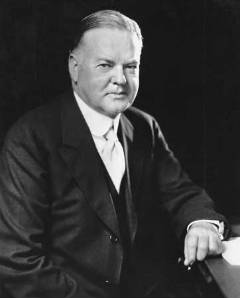 Although Herbert Hoover won the 1928 presidential election with
almost 60 percent of the vote, today he’s basically remembered as a dam.
Actually, many Americans probably think he was an FBI director or the
guy who invented a vacuum. But Hoover was, in fact, a U.S. president —
and an interesting one to boot. Orphaned at age 9, he worked and scraped
his way into the newly minted Stanford University to study mining
engineering. There, he married Lou Henry, the only female geology
student at the school, and the pair traveled the world evaluating mining
sites and learning languages. (In the White House, they often spoke in
Mandarin when they didn’t want staff eavesdropping.) Hoover’s successful
coordination of the U.S. Food Administration during WWI paved his way
to the Oval Office. Although massively popular early in his term, a
little thing called the Great Depression came along and seriously soured
his approval rating. Herbert battled bravely against the dusty tide of
poverty, but his programs were largely ineffective. Sorry, Herbert.
Great dam, though. Great dam.
Although Herbert Hoover won the 1928 presidential election with
almost 60 percent of the vote, today he’s basically remembered as a dam.
Actually, many Americans probably think he was an FBI director or the
guy who invented a vacuum. But Hoover was, in fact, a U.S. president —
and an interesting one to boot. Orphaned at age 9, he worked and scraped
his way into the newly minted Stanford University to study mining
engineering. There, he married Lou Henry, the only female geology
student at the school, and the pair traveled the world evaluating mining
sites and learning languages. (In the White House, they often spoke in
Mandarin when they didn’t want staff eavesdropping.) Hoover’s successful
coordination of the U.S. Food Administration during WWI paved his way
to the Oval Office. Although massively popular early in his term, a
little thing called the Great Depression came along and seriously soured
his approval rating. Herbert battled bravely against the dusty tide of
poverty, but his programs were largely ineffective. Sorry, Herbert.
Great dam, though. Great dam.2. Martin Van Buren (President #8, 1837–1841)
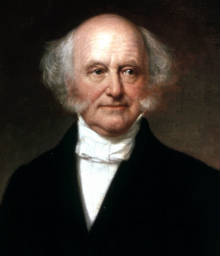 Despite earning catchy nicknames such as “The Little Magician” and
“The Red Fox of Kinderhook” on the political battlefield, M.V.B. is far
from the MVP of the American presidency. One title he can claim, though,
is that of the first president not of British descent. Van Buren was
the son of a Dutch tavern owner and gained his taste for politics
listening to debates in the rowdy rooms of the family saloon. A
self-taught lawyer, the politically adept Van Buren quickly rose up the
governmental ranks, landing a spot as President Andrew Jackson’s
secretary of state in 1828. By keeping clear of the Cabinet infighting
that marred Jackson’s first term, Van Buren replaced John Calhoun as
Jackson’s vice president in the second term. In 1836, he won the
presidency, but soon fizzled out in a daze of leadership defeats and
ineffective policies. Don’t look for him on the penny any time soon.
Despite earning catchy nicknames such as “The Little Magician” and
“The Red Fox of Kinderhook” on the political battlefield, M.V.B. is far
from the MVP of the American presidency. One title he can claim, though,
is that of the first president not of British descent. Van Buren was
the son of a Dutch tavern owner and gained his taste for politics
listening to debates in the rowdy rooms of the family saloon. A
self-taught lawyer, the politically adept Van Buren quickly rose up the
governmental ranks, landing a spot as President Andrew Jackson’s
secretary of state in 1828. By keeping clear of the Cabinet infighting
that marred Jackson’s first term, Van Buren replaced John Calhoun as
Jackson’s vice president in the second term. In 1836, he won the
presidency, but soon fizzled out in a daze of leadership defeats and
ineffective policies. Don’t look for him on the penny any time soon.3. Warren Harding (President #29, 1921–1923)
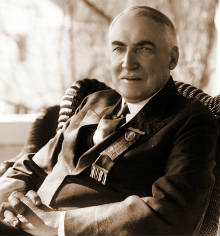 Warren G. Harding is generally regarded as the worst president ever.
He was disappointing from the get-go, as the very basis of his campaign
was boring. Harding ran on the promise of a “return to normalcy,” which
he (somehow) felt people craved following Woodrow Wilson’s bold and
visionary term. To make things worse, Harding ran the White House like a
kind of boys’ club, where he and some friends known as the “Ohio Gang”
enjoyed drinking, playing golf, and cheating on their wives. (Harding is
widely rumored to have paid a gambling debt with antique White House
china.) After admitting to friends that he felt overmatched by the job
of president, Harding gave his Cabinet free reign and treated the
presidency as more of a ceremonial post. Just as the friends he’d
appointed were being nailed for corruption one after another, Harding
contracted what doctors assumed was ptomaine poisoning and died of a
related heart attack. No autopsy was performed, but rumors abounded that
his wife poisoned him to protect what legacy he had left.
Warren G. Harding is generally regarded as the worst president ever.
He was disappointing from the get-go, as the very basis of his campaign
was boring. Harding ran on the promise of a “return to normalcy,” which
he (somehow) felt people craved following Woodrow Wilson’s bold and
visionary term. To make things worse, Harding ran the White House like a
kind of boys’ club, where he and some friends known as the “Ohio Gang”
enjoyed drinking, playing golf, and cheating on their wives. (Harding is
widely rumored to have paid a gambling debt with antique White House
china.) After admitting to friends that he felt overmatched by the job
of president, Harding gave his Cabinet free reign and treated the
presidency as more of a ceremonial post. Just as the friends he’d
appointed were being nailed for corruption one after another, Harding
contracted what doctors assumed was ptomaine poisoning and died of a
related heart attack. No autopsy was performed, but rumors abounded that
his wife poisoned him to protect what legacy he had left.4. James Monroe (Presidet #5, 1817-1825)
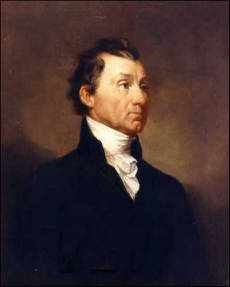 Monroe is proof that being a good president doesn’t make you memorable.
It’s a shame though, because the guy led a pretty memorable life. While
still a teenager, he inherited his family’s plantation and ran it before
heading off to college. He later dropped out of school to fight in the
American Revolution. After gaining distinction as a leader and a
patriot, Monroe was named the U.S. minister to France in 1794, and five
years later, he was elected governor of Virginia. When Monroe took over
the presidency, the country was on a high from a booming economy, so his
political obstacles were easily vaulted. In fact, when it came time for
re-election in 1820, everyone was so fat and happy they just said, “Eh,
keep it up,” and let him run (mostly) unopposed. His presidency has
been called the “Era of Good Feelings,” and while J.M. doesn’t get much
airtime nowadays, he’s got no reason to hang his head.
Monroe is proof that being a good president doesn’t make you memorable.
It’s a shame though, because the guy led a pretty memorable life. While
still a teenager, he inherited his family’s plantation and ran it before
heading off to college. He later dropped out of school to fight in the
American Revolution. After gaining distinction as a leader and a
patriot, Monroe was named the U.S. minister to France in 1794, and five
years later, he was elected governor of Virginia. When Monroe took over
the presidency, the country was on a high from a booming economy, so his
political obstacles were easily vaulted. In fact, when it came time for
re-election in 1820, everyone was so fat and happy they just said, “Eh,
keep it up,” and let him run (mostly) unopposed. His presidency has
been called the “Era of Good Feelings,” and while J.M. doesn’t get much
airtime nowadays, he’s got no reason to hang his head.5. Chester Arthur (President #21, 1881–1885)
 Most people don’t know ol’ Chesty for anything other than his mammoth
moustache. But he should be remembered as a guy who rose to the
occasion. As a young man, Arthur worked on civil rights cases in New
York before succumbing to the corrupt New York political machine of
Roscoe “Boss” Conkling. (How anyone could fail to detect corruption in
someone named Roscoe “Boss” Conkling is beyond us.) In 1881, Arthur
became vice president under James Garfield, but soon butted heads with
the president over an appointment that sapped Conkling’s power. In fact,
Arthur and Garfield were hardly communicating when, a few months later,
Garfield was assassinated, and Arthur suddenly became the big cheese.
Instead of behaving like a pawn as everyone expected, Arthur became a
man of the people, taking steps to cut back on cronyism and rebuffing
pressures from big business. And what do you call him? The president
with the big moustache. Nice going!
Most people don’t know ol’ Chesty for anything other than his mammoth
moustache. But he should be remembered as a guy who rose to the
occasion. As a young man, Arthur worked on civil rights cases in New
York before succumbing to the corrupt New York political machine of
Roscoe “Boss” Conkling. (How anyone could fail to detect corruption in
someone named Roscoe “Boss” Conkling is beyond us.) In 1881, Arthur
became vice president under James Garfield, but soon butted heads with
the president over an appointment that sapped Conkling’s power. In fact,
Arthur and Garfield were hardly communicating when, a few months later,
Garfield was assassinated, and Arthur suddenly became the big cheese.
Instead of behaving like a pawn as everyone expected, Arthur became a
man of the people, taking steps to cut back on cronyism and rebuffing
pressures from big business. And what do you call him? The president
with the big moustache. Nice going!6. Millard Fillmore (President #13, 1850–1853)
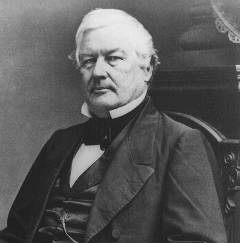 Today, Millard Fillmore’s name is synonymous with overlooked. Need
proof? In February 2006, a group called the Friends of Millard Fillmore
hosted the 38th annual FOMF Trivia Hunt, a contest celebrating obscure
knowledge. Fillmore was born in 1800 to a destitute family, but thanks
to a merciless work ethic, he taught himself to read and eventually
became a lawyer. That quickly segued into politics, and in 1848, the
Whigs ran Fillmore for VP alongside Zachary Taylor. The pair won the
election, but remained divided by their views on slavery (Taylor being a
southern slave owner, and Fillmore, well, not). When Taylor died,
Fillmore tried to appease the North and South by supporting the
Compromise of 1850. Unfortunately, the move alienated the North and
created a fair share of enemies on both sides. Thus tainted, he lost
several bids for re-election and died of a stroke in 1874.
Today, Millard Fillmore’s name is synonymous with overlooked. Need
proof? In February 2006, a group called the Friends of Millard Fillmore
hosted the 38th annual FOMF Trivia Hunt, a contest celebrating obscure
knowledge. Fillmore was born in 1800 to a destitute family, but thanks
to a merciless work ethic, he taught himself to read and eventually
became a lawyer. That quickly segued into politics, and in 1848, the
Whigs ran Fillmore for VP alongside Zachary Taylor. The pair won the
election, but remained divided by their views on slavery (Taylor being a
southern slave owner, and Fillmore, well, not). When Taylor died,
Fillmore tried to appease the North and South by supporting the
Compromise of 1850. Unfortunately, the move alienated the North and
created a fair share of enemies on both sides. Thus tainted, he lost
several bids for re-election and died of a stroke in 1874.7. Franklin Pierce (President #14, 1853-1857)
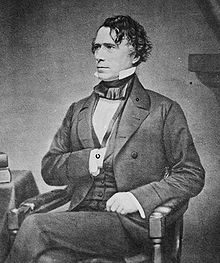 The son of a two-term New Hampshire governor, Pierce rode the
coattails of nepotism into the U.S. House and Senate by age 30. In 1852,
he came out of nowhere to win the presidency. He beat out seemingly
more dedicated candidates with a platform essentially based on trying to
avoid the hot-button issue of slavery. But his presidency didn’t get
off to a good start. Two months before Pierce took office, his
11-year-old son was killed in a train wreck. Hampered by heartbreak,
Pierce tried not to rock the boat of peace between the North and South,
but that plan didn’t exactly pan out. By signing the Kansas-Nebraska Act
in 1854, he inadvertently launched a frenzy of shooting matches in
Kansas and re-awakened the conflict surrounding slavery. The Democrats
reeling, Pierce was abandoned and denied the chance to run for a second
term.
The son of a two-term New Hampshire governor, Pierce rode the
coattails of nepotism into the U.S. House and Senate by age 30. In 1852,
he came out of nowhere to win the presidency. He beat out seemingly
more dedicated candidates with a platform essentially based on trying to
avoid the hot-button issue of slavery. But his presidency didn’t get
off to a good start. Two months before Pierce took office, his
11-year-old son was killed in a train wreck. Hampered by heartbreak,
Pierce tried not to rock the boat of peace between the North and South,
but that plan didn’t exactly pan out. By signing the Kansas-Nebraska Act
in 1854, he inadvertently launched a frenzy of shooting matches in
Kansas and re-awakened the conflict surrounding slavery. The Democrats
reeling, Pierce was abandoned and denied the chance to run for a second
term.8. Rutherford B. Hayes (President #19, 1877–1881)
 Rutherford B. Hayes is slightly more memorable due to the catchiness
of his name, but he’s still more than obscure enough to make our list.
Raised by a single mother, Hayes worked his way up in the world from
next to nothing, studying at Harvard and practicing law in Cincinnati.
When the Civil War erupted, Hayes was 39 and a father of three.
Nonetheless, he volunteered to fight and quickly distinguished himself
as a valuable leader. After parlaying this fame into a Senate seat and
then the governorship of Ohio, he received the Republican presidential
nomination in 1876. Until the chad-alicious scandal of 2000, this was
perhaps America’s most contested election –ending with a special
Congressional committee declaring Hayes the winner over Samuel J. Tilden
by one electoral vote. Once he took office, Hayes got right to work
healing a nation still battered by the Civil War. He later claimed to
have inherited the country “divided and distracted” and left it “united,
harmonious and prosperous.” Unfortunately for ol’ Rutherford, harmony
and prosperity alone won’t get your mug on Mount Rushmore.
Rutherford B. Hayes is slightly more memorable due to the catchiness
of his name, but he’s still more than obscure enough to make our list.
Raised by a single mother, Hayes worked his way up in the world from
next to nothing, studying at Harvard and practicing law in Cincinnati.
When the Civil War erupted, Hayes was 39 and a father of three.
Nonetheless, he volunteered to fight and quickly distinguished himself
as a valuable leader. After parlaying this fame into a Senate seat and
then the governorship of Ohio, he received the Republican presidential
nomination in 1876. Until the chad-alicious scandal of 2000, this was
perhaps America’s most contested election –ending with a special
Congressional committee declaring Hayes the winner over Samuel J. Tilden
by one electoral vote. Once he took office, Hayes got right to work
healing a nation still battered by the Civil War. He later claimed to
have inherited the country “divided and distracted” and left it “united,
harmonious and prosperous.” Unfortunately for ol’ Rutherford, harmony
and prosperity alone won’t get your mug on Mount Rushmore.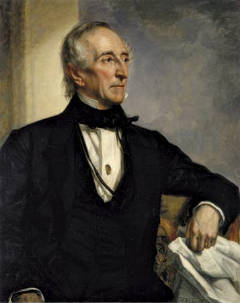 9. John Tyler (President #10, 1841–1845)
9. John Tyler (President #10, 1841–1845)John Tyler was up against it from the start. For one thing, he only got to be president because he was the VP under William Henry Harrison, who died of pneumonia following his inauguration speech. Let’s put it this way: When your nicknames include “His Accidency,” you’re not destined to make a splash. After Harrison’s unscheduled departure, Tyler’s orchestration of an orderly transfer of power was his only recognized political success. Tyler didn’t want to alienate Harrison’s supporters, so he retained the departed president’s Cabinet. Unfortunately, they had little respect for their new leader. When he once vetoed a bill they favored, all but one of them resigned. That’s pretty much how the presidency went for Tyler. In fact, his own Whig party tried to have him impeached. Tyler gamely ran for re-election in 1844, but was persuaded to withdraw. Broke, Tyler returned to his Virginia plantation and spent a lot of time supporting the secession of the South. (That didn’t work out so well either.)
10. Zachary Taylor (President #12, 1849-1850)
 Despite his privileged upbringing, ownership of slaves, and
reputation as an “Indian fighter,” Zachary Taylor was the most popular
man in America when he won the election in 1848. Like many members of
our list, Taylor spent much of his presidency wrestling with the
question of slavery. Unfortunately, this left little time for him to
wrestle with the question of how not to contact cholera, and he
died of the disease in 1850. Millard Fillmore took office next, almost
immediately signing the Compromise of 1850 and wiping out what little
progress Taylor had made. Welcome to the annals of anonymity, Zach.
Despite his privileged upbringing, ownership of slaves, and
reputation as an “Indian fighter,” Zachary Taylor was the most popular
man in America when he won the election in 1848. Like many members of
our list, Taylor spent much of his presidency wrestling with the
question of slavery. Unfortunately, this left little time for him to
wrestle with the question of how not to contact cholera, and he
died of the disease in 1850. Millard Fillmore took office next, almost
immediately signing the Compromise of 1850 and wiping out what little
progress Taylor had made. Welcome to the annals of anonymity, Zach.

No comments:
Post a Comment